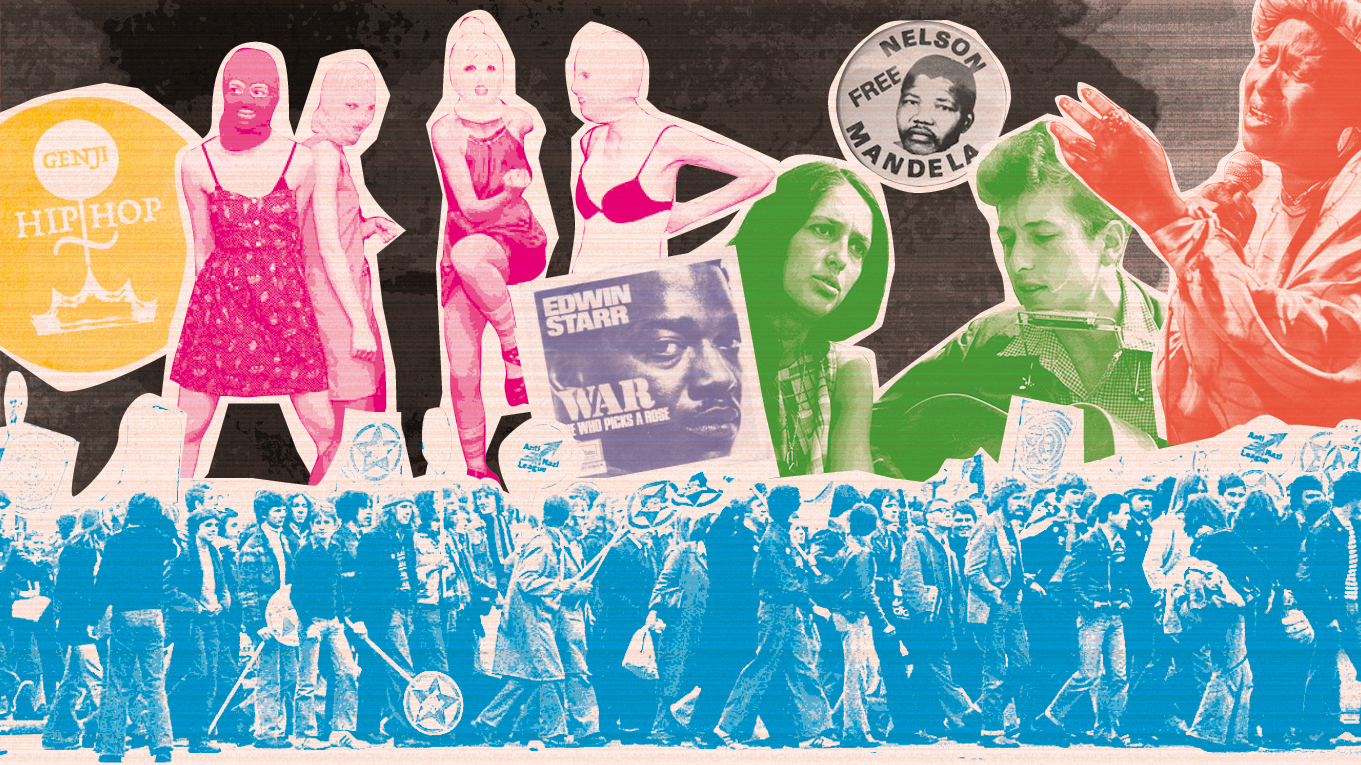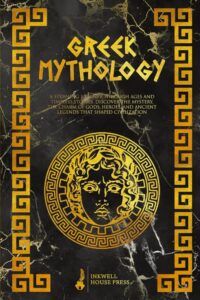Music has historically served as a significant catalyst for change, reflecting the struggles and aspirations of resistance movements throughout time.
From the impactful anthems of the Civil Rights Movement in the United States to the evocative melodies of the Anti-Apartheid Movement in South Africa, music has the capacity to unite individuals, foster a sense of identity, and amplify messages of hope and defiance.
This discussion will explore the profound impact of music on both historical and contemporary resistance movements, examining its role in mobilization, emotional support, and the evolution of protest songs.
The analysis will reveal how music continues to inspire and challenge societies in the present day.
The Power of Music in Resistance Movements
.jpg_00.jpeg)
The role of music in resistance movements is significant, extending beyond mere entertainment to function as a crucial instrument for social change, activism, and cultural resistance.
Historically, music has served as a unifying force that empowers marginalized voices, influences cultural identity, and cultivates a sense of solidarity among communities engaged in the struggle against oppression and political change.
From protest songs to anthems of revolution, the rhythmic expression and lyrical narratives encapsulate the essence of dissent, fostering a collective memory that inspires and sustains movements, reflecting historical context and cultural expression.
The Role of Music in Historical Resistance Movements
Music has played a crucial role in historical resistance movements, functioning both as a rallying call and a medium for cultural expression.
Notable movements, including the Civil Rights Movement in the United States, the Anti-Apartheid Movement in South Africa, and the Solidarity Movement in Poland, employed music to enhance their messages, unify participants, and cultivate a sense of hope and resilience.
By analyzing the historical significance of these protest songs, we can gain insight into their influence on cultural identity and social movements.
1. Civil Rights Movement in the United States
The Civil Rights Movement in the United States was profoundly influenced by protest songs that conveyed the struggles and aspirations of African Americans in their pursuit of justice and equality. These anthems served not only as forms of artistic expression but also as powerful instruments of give the power toment, galvanizing grassroots movements, articulating opposition against oppression, and fostering a united front in the fight for civil rights.
Prominent artists such as Billie Holiday, whose haunting rendition of “Strange Fruit” exposed the atrocities of lynching, and Sam Cooke, with his hopeful classic “A Change is Gonna Come,” captured the deep emotional resonance of the quest for human dignity. In public gatherings and rallies, these songs transcended mere entertainment; they became rallying cries that invoked solidarity and instilled courage among those who felt marginalized.
The socio-political context of the 1960s, characterized by vigorous resistance to segregation and systemic inequities, highlighted the crucial role of music in shaping the collective memory of the movement. Today, the poignant lyrics of these songs continue to inspire contemporary activists, serving as a reminder of the resilience and steadfast spirit of those who fought for change.
2. Anti-Apartheid Movement in South Africa
During the Anti-Apartheid Movement in South Africa, music emerged as an essential component of resistance, providing a voice for individuals oppressed by the system of racial segregation.
Protest songs articulated the struggles for liberation and justice, transcending cultural and linguistic barriers to unify diverse communities in their fight against injustice, exploitation, and oppression.
Prominent musicians such as Hugh Masekela and Miriam Makeba became powerful symbols of this struggle, utilizing their artistry to challenge the existing status quo. Their songs, rich with narratives of suffering and hope, resonated profoundly within South Africa and beyond, fostering a sense of solidarity among the oppressed.
The fusion of traditional African sounds with contemporary styles, including elements of jazz and rock, not only highlighted cultural identity but also served as a rallying cry for collective action.
Through their live performances, these artists galvanized support on both local and international stages, underscoring the capacity of artistry to ignite social change, inspire hope, and foster a vision for a brighter future.
3. Solidarity Movement in Poland
The Solidarity Movement in Poland exemplifies the profound impact music can have in inspiring political dissent and grassroots movements in the face of repression. Protest songs played a crucial role in galvanizing support and fostering a collective identity, enabling citizens to articulate their opposition to the authoritarian regime while promoting messages of hope and solidarity.
These anthems resonated deeply within the hearts of individuals and served as a unifying force that transcended social and economic divides. As phrases of resistance reverberated through workshops and gatherings, they became powerful tools for communication, facilitating connections among activists dispersed across the nation.
The significance of these songs extends beyond mere entertainment; they served as cultural artifacts that provided a framework for envisioning freedom and democracy. Through their lyrics, musicians articulated the struggles and aspirations of ordinary people, ultimately shaping the narrative of Poland’s journey toward a more just society.
4. Velvet Revolution in Czechoslovakia
The Velvet Revolution in Czechoslovakia exemplifies the significant role that music can play in give the power toing communities in their pursuit of liberation and democratic change. Protest music, characterized by its lyrical themes of hope and resistance, emerged as a vital form of artistic expression that united citizens against oppressive regimes, encapsulating their collective aspirations for freedom.
During this transformative period, specific songs and influential artists became symbols of resistance, cultivating a strong sense of cultural identity and solidarity among the populace. The impact of music extended beyond mere entertainment; it energized gatherings, rallies, and protests, motivating those who sought to challenge the status quo.
The evocative melodies and poignant lyrics of musicians resonated deeply within individuals, acting as catalysts for change that echoed throughout both urban and rural areas. The enduring legacy of these protest anthems continues to inspire contemporary movements, underscoring the profound connection between art and activism in shaping societal values.
How Does Music Help in Resistance Movements?
.jpg_01.jpeg)
Music serves a critical function in resistance movements by unifying and mobilizing individuals around common objectives, fostering a sense of identity, and offering emotional support during difficult periods.
Through rhythmic expression and impactful lyrics, music promotes collective action, strengthens community ties, and cultivates resilience among those advocating for social justice, change, and solidarity.
1. Unifying and Mobilizing People
Music functions as a significant medium for unifying and mobilizing individuals, transforming personal feelings of discontent into collective action through engaging melodies and meaningful lyrics. Protest anthems resonate deeply with audiences, igniting motivation and participation, and frequently becoming rallying cries that are echoed in public gatherings and demonstrations.
For example, songs such as “We Shall Overcome” have celebrated the spirit of resilience throughout civil rights movements, acting as a beacon of hope that transcends generations. Similarly, tracks like “Fight the Power” by Public Enemy incorporate elements of urgency and defiance, effectively motivating audiences to take action against social injustices.
The compelling rhythms and melodies of these songs serve a purpose beyond mere entertainment; they establish connections among diverse groups of individuals, fostering a shared sense of purpose.
Thus, music not only reflects societal struggles but also plays a vital role in promoting unity, encouraging collective action, and fostering artistic movements for meaningful change.
2. Creating a Sense of Identity and Solidarity
Music plays a crucial role in fostering a sense of identity and solidarity within resistance movements, enabling individuals to express their distinct cultural experiences while promoting shared values and objectives. Through cultural expression, communities are able to articulate their struggles, aspirations, and resilience, thereby creating a profound connection among members and reinforcing their collective identity.
Genres such as folk, hip-hop, and reggae have significantly influenced social movements, serving as powerful instruments for give the power toment and resistance. For example, hip-hop has emerged as a prominent voice for marginalized communities, articulating their narratives and struggles while fostering unity among diverse groups.
Similarly, traditional folk music often revitalizes historical narratives aimed at healing and consolidation during periods of conflict. The rhythmic beats and poignant lyrics not only inspire individuals but also evoke a sense of belonging, rallying them around a common purpose.
This shared musical experience deepens interpersonal bonds and strengthens community ties, underscoring the vital importance of music in shaping cultural identity and enhancing social solidarity.
3. Spreading Message and Ideas
Protest music serves as an effective medium for disseminating messages and ideas, employing storytelling to convey complex socio-political issues in an accessible manner. Through compelling lyrics and melodies, musicians articulate the struggles and aspirations of social movements, inspiring listeners to engage in activism, embrace resistance movements, and contribute to social change.
By weaving narratives that reflect real-life experiences, these songs establish a connection between the artist and the audience, fostering a sense of shared understanding and collective urgency. This engagement not only amplifies the voices of marginalized communities but also encourages listeners to empathize with the challenges faced by others, emphasizing themes of identity and freedom.
The rhythmic pulse of protest music possesses the capacity to awaken consciousness, ultimately mobilizing individuals towards action while sparking conversations around critical themes such as inequality, injustice, human rights, and political change.
Consequently, these powerful anthems function not merely as soundtracks to movements but also as catalysts for broader societal transformation and empowerment.
4. Providing Emotional Support and Resilience
Music serves as a vital source of emotional support and resilience during challenging times, offering solace and hope to individuals engaged in resistance movements. The emotional resonance of protest music has the ability to uplift spirits, instill courage, and reinforce the determination to persist in the pursuit of justice and equality, acting as a tool for liberation against oppression.
For these activists, particular songs frequently evolve into anthems that encapsulate the shared struggles and aspirations of their communities. The rhythm and lyrics foster a profound sense of connection, reminding individuals that they are not alone in their endeavors, echoing the solidarity seen in civil rights movements.
This collective experience cultivates give the power toment, as individuals derive strength from one another while singing together. In moments of despair, the appropriate song can evoke memories of past victories, reignite passion, and motivate sustained efforts for change.
Ultimately, the psychological impact of music intertwines resilience with community support, serving as a powerful catalyst for both personal and collective transformation.
The Evolution of Resistance Music
The evolution of resistance music reflects the dynamic nature of social movements, transitioning from traditional songs grounded in folk traditions to modern protest anthems that have a global resonance.
This transformation underscores the effects of globalization and the cross-cultural influences that have shaped contemporary resistance music, enabling a convergence of diverse voices in the pursuit of social justice.
1. From Traditional Songs to Modern Protest Songs
.jpg_10.jpeg)
The transition from traditional songs to modern protest songs exemplifies the enduring power of music as a medium for storytelling and cultural heritage. Traditional folk music frequently communicated historical narratives and fostered communal bonds, while contemporary protest songs adapt these themes to address current issues and resonate with new generations, blending elements of hip-hop, reggae, and rock.
As social movements arise in response to injustice and inequality, the characteristics of traditional songs—such as their rhythmic structures, relatable lyrics, and collective singing—continue to exert significant influence. This connection to cultural roots enhances the emotional resonance of resistance music.
Present-day artists often incorporate intricate storytelling into their lyrics, drawing parallels between historical struggles and current socio-political contexts. Thematic elements such as identity, resilience, and hope are prevalent in this modern genre, reflecting the sentiments of contemporary audiences.
By merging traditional elements with contemporary sounds, these protest songs not only pay homage to their origins but also serve to inspire activism, embodying the spirit of resilience and transformative change.
2. The Rise of Digital Music and Social Media
The emergence of digital music and social media has significantly transformed the landscape of activism, allowing global protest movements to flourish through the democratization of music distribution and cultural expression. This evolution give the power tos musicians to disseminate their work widely, engage with audiences, and mobilize support for social change on an unprecedented scale.
In recent years, platforms such as Spotify, YouTube, and Instagram have played crucial roles in amplifying the voices of both activists and artists. For instance, the ‘Black Lives Matter’ movement witnessed an influx of protest songs that resonated profoundly with listeners, effectively communicating messages of justice and equality, and sparking international movements.
Similarly, during the climate strikes, musicians utilized the power of social media to advocate for awareness and action, successfully drawing millions to participate in global events.
These digital channels not only facilitate the dissemination of impactful anthems but also foster community engagement by connecting like-minded individuals and groups, thereby creating a vibrant ecosystem for activism to thrive.
3. Globalization and Cross-cultural Influences
Globalization has significantly facilitated cross-cultural influences in protest music, fostering transcultural connections that enrich the narratives of resistance movements across the globe. This exchange of musical ideas and styles empowers diverse voices to contribute meaningfully to the global dialogue on social justice and cultural resistance, revolutionizing cultural expression.
These connections are exemplified in collaborations that skillfully blend hip-hop with traditional African rhythms, invigorating movements throughout the continent. Artists from various backgrounds come together to create powerful anthems that resonate with shared struggles and aspirations, highlighting the importance of historical context and international solidarity.
Notable examples include the work of musicians such as Shakira and the uplifting sounds of the Wailers, both of whom have transcended national borders to raise global awareness about pressing issues such as inequality and climate change.
This fusion of musical genres not only amplifies the messages of resistance but also underscores the importance of community solidarity, serving as a reminder that music can be a unifying force in the pursuit of justice.
The Impact of Resistance Music Today
The influence of resistance music today remains significant, playing a vital role in contemporary movements for social change and justice, serving as a form of protest art and musical legacy.
Musicians and activists leverage the power of music to address pressing societal issues, making resistance music a critical form of artistic expression and a means to articulate opposition to injustice. This highlights the role of protest culture and its impact on societal change.
1. Music as a Tool for Social and Political Change
Music functions as a significant instrument for social and political change, offering a platform for marginalized voices to be acknowledged and mobilized. Through its emotional depth and thematic significance, music has the capacity to inspire action, provoke critical thought, and unite communities in challenging injustice and inequality, embodying the spirit of dissent and rebellion.
Various genres and movements, including folk, rock, hip-hop, and punk, have effectively utilized the power of music to amplify social messages. Iconic protest songs, such as Bob Dylan’s “The Times They Are A-Changin’” during the Civil Rights Movement and Public Enemy’s “Fight The Power” in the context of racial injustice, exemplify how musicians articulate the struggles of their respective eras, serving as anthems of cultural resistance.
These compositions not only raise awareness but also play a pivotal role in organizing efforts, fostering unity among diverse groups. Consequently, music transcends the realm of entertainment, emerging as anthems of resilience and catalysts for transformative social progress.
2. The Role of Music in Current Resistance Movements
In contemporary resistance movements, music plays a crucial role in shaping narratives, fostering community empowerment, and driving collective action. From climate activism to racial justice, musicians continue to produce impactful anthems that resonate with the struggles and aspirations of modern activists, emphasizing the role of music therapy and audience engagement.
These anthems not only amplify the message of resistance but also contribute to building solidarity among diverse groups advocating for change. For example, songs such as “This is America” by Childish Gambino vividly illustrate the complexities of gun violence and systemic racism, thereby igniting discussions surrounding these urgent issues and highlighting the importance of collective identity.
Likewise, Billie Eilish’s “Your Power” highlights the pressing concerns of sexual exploitation, inspiring individuals to confront and challenge oppressive systems.
Artists frequently utilize their platforms not only for entertainment purposes but as a means to initiate dialogue and garner support for various social causes. This approach embodies the essence of cultural resistance while give the power toing their communities to take a stand.
3. Challenges and Controversies Surrounding Resistance Music
.jpg_11.jpeg)
Resistance music frequently encounters various challenges and controversies, including censorship, commercial pressures, and ongoing debates about authenticity and ownership of cultural expression. These complexities illustrate the dynamic interplay between music, activism, and societal change, prompting critical discussions among artists and activists, particularly in the context of anti-establishment and intersectionality themes.
The very essence of resistance music is often subjected to scrutiny based on societal reactions, as evidenced by the experiences of artists such as Kanye West. His provocative statements have elicited criticism, with detractors arguing that his work navigates the fine line between artistic expression and provocation.
In a similar vein, musicians like Billie Eilish have faced backlash for their candid discussions of issues such as mental health, social justice, and climate change, which some perceive as excessively raw or politically charged. This highlights the intersectionality of identity politics and how musicians influence political discourse through their lyrics.
These instances highlight how the potential of music as a catalyst for social change and empowerment can be undermined by external pressures and the fear of social ostracization. Ultimately, they raise significant questions regarding the efficacy of music as a form of activism and protest culture in a context where cultural expression is subject to continuous scrutiny and dissent is often met with resistance.
Frequently Asked Questions
What is the significance of music in resistance movements throughout history and its emotional impact?
Music has played a crucial role in resistance movements throughout history by giving a voice to the oppressed, uniting people in solidarity, and inspiring change. The emotional resonance of protest songs and revolutionary songs has been a powerful tool in conveying messages of hope and liberation.
How has music, such as folk music, been used in resistance movements?
Music has been used in resistance movements in various forms such as protest songs, chants, and cultural expressions to spread messages of defiance, hope, and unity. Genres like folk music, hip-hop, reggae, and rock have all contributed to the sonic activism that fuels these movements.
Can you provide examples of music and its role in historical resistance movements and social movements?
Sure, some notable examples include the Civil Rights Movement in the United States, where songs like “We Shall Overcome” and “A Change is Gonna Come” became anthems for the movement. These songs played a significant role in fostering a sense of community and solidarity among activists during gatherings and marches.
What impact does music and artistic expression have on resistance movements?
Music has the power to inspire, motivate, and educate people, making it a powerful tool for resistance movements to spread their message and mobilize the masses. The storytelling and symbolism in music can highlight themes of oppression and freedom, driving awareness and societal impact.
Has music always been a part of resistance movements throughout history?
No, while music has been used in resistance movements for centuries, it became more prominent during the 20th century with the rise of social and political activism across the world.
How does music continue to play a role in modern-day resistance movements and grassroots movements?
Music remains a crucial element in modern-day resistance movements, with artists using their platform to bring attention to social and political issues and give power to the marginalized through their music. This includes genres such as hip-hop and reggae, which often address political themes and serve as a voice for marginalized voices in society.

My name is Bruno, I have been a writer for 5 years and I work with website creation. My goal is to provide true information to readers. In fact, on this site I write about cultures and traditions, which I have been passionate about since childhood.




